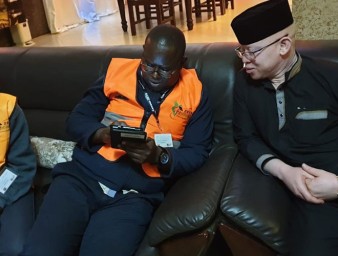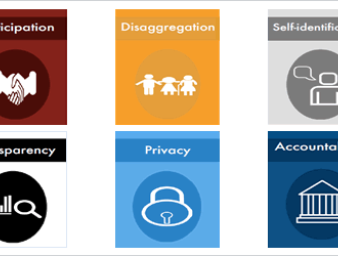Indicators: essential tools in the realization of human rights
07 November 2012

Residents of the Seven Towers high-rise complex in North Belfast have achieved significant improvements in their living conditions by harnessing the power of statistics. Seven Towers is a social housing complex in Northern Ireland, a 1960’s development of 380 flats, the largest development of its kind in the country, and is now very run-down.
The people who live in the Towers, with the assistance of a civil society organization, Participation and the Practice of Rights Project (PPRP), used qualitative and quantitative surveys to support their case for better conditions and for more inclusive decision making.
They linked their recurrent and serious housing problems to a set of core “right to adequate housing” indicators to monitor progress or lack thereof. It included basic indicators like the percentage of residents with drainage and sewage problems, the percentage of residents reporting dampness and mould in their flats, and the percentage of residents dissatisfied with how involved they felt in decisions by the housing executive.
The residents’ actions continue but, according to the PPRP, they have made substantial progress.
The Seven Towers community campaign is used in the newly published guide to human rights indicators, authored by the UN Human Rights Office, as an example of how people can effectively use indicators to claim their rights.
In the foreword to Human Rights Indicators: A Guide to Measurement and Implementation, the UN High Commissioner for Human Rights, Navi Pillay says, “The human rights journey from standard-setting to effective implementation depends, in large measure, on the availability of appropriate tools for policy formulation and evaluation. Indicators, both quantitative and qualitative are one such essential tool.”
“In recent years, the critical need for such tools has become increasingly evident,” Pillay says, recalling that just prior to the Arab Spring, there were reports of “remarkable economic and social progress and general improvements in governance and the rule of law” being achieved in some countries in the region. At the same time, UN human rights bodies and civil society were reporting widespread deprivation of a range of fundamental human rights, she says.
The popular uprisings and demonstrations witnessed in all regions of the world “compel us to review existing analytical, methodological and legal frameworks,” Pillay says, “to ensure that they integrate real attention to freedom from fear and want, and to discrimination; assess the extent of public participation in development and in the fair distribution of its benefits; strengthen accountability and embrace methods of empowering people, especially the most vulnerable and the most marginalized.”
Development of a framework of indicators by the UN Human Rights Office was initiated with the guidance of the international committees which assess implementation of human rights at country level. This process has built on a multidisciplinary approach and involved consultations with a wide range of international and national human rights actors, including government agencies, national human rights institutions, statistics offices and civil society organizations.
The Guide quotes the economist G.K. Galbraith: “if it is not counted, it tends not to be noticed.” In other words, there is a need for suitable information to bring further transparency and accountability in the pursuit of universally valued goals. The human rights indicators described in the Guide aim to fulfill that requirement: they facilitate monitoring of compliance with the international treaties; they can assist national governments in implementing rights-based policy; and can bolster cases argued by human rights advocates.
Nicolas Fasel, coordinator of the work on human rights indicators in RRDD says,
“Statistical systems play a critical role in the protection and measurement of human rights at the country level. In order to do this, their work should be guided by the international normative framework of human rights, and should pay special attention to information that is disaggregated beyond national averages.”
“Well articulated indicators,” Fasel says, “can improve public understanding of constraints and policy trade-offs and help create broader consensus on social priorities.”
The Guide notes that the use of indicators is becoming increasingly common both internationally and at the country level, in developing public policies and legislative programs compliant with global human rights standards.
In 2009, Guatemala became the first State to use the human rights indicators developed by the Office of the High Commissioner for Human Rights to assist in its reporting to the UN treaty bodies on the rights to health, food and education.
Brazil, Kenya, Mexico, Nepal, Sweden and the United Kingdom have also used elements of the framework to develop and meet human rights objectives.
In her foreword, Pillay emphasizes that the indicators and methods in the Guide “are primarily meant to inform more comprehensive assessments and are neither designed nor suitable for ranking the human rights performance of States.”
“The primary objective here is to highlight the human rights norms and principles, spell out the essential attributes of the rights enshrined in international instruments and translate this narrative into contextually relevant indicators and benchmarks for implementing and measuring human rights at country level,” she says.
The Guide and a short description of its content can be downloaded free of charge here.
7 November 2012

VIEW THIS PAGE IN:



